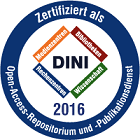Gemünd, Ioanna Dafni: Multi-layer single-cell omics applications in the context of infection. - Bonn, 2024. - Dissertation, Rheinische Friedrich-Wilhelms-Universität Bonn, University of Melbourne.
Online-Ausgabe in bonndoc: https://nbn-resolving.org/urn:nbn:de:hbz:5-80051
Online-Ausgabe in bonndoc: https://nbn-resolving.org/urn:nbn:de:hbz:5-80051
@phdthesis{handle:20.500.11811/12621,
urn: https://nbn-resolving.org/urn:nbn:de:hbz:5-80051,
doi: https://doi.org/10.48565/bonndoc-437,
author = {{Ioanna Dafni Gemünd}},
title = {Multi-layer single-cell omics applications in the context of infection},
school = {{Rheinische Friedrich-Wilhelms-Universität Bonn} and {University of Melbourne}},
year = 2024,
month = dec,
note = {Single cell multi-omics sequencing techniques have seen rapid developments in the last few years. The ability of pairing different data modalities makes it an attractive tool for investigating adaptive immune responses. This thesis consists of three projects, which share the common goal of gaining comprehensive insight into T cell biology through single cell multi-omics approaches.
Initially, in this thesis I review major developments in the capture of single cell adaptive immune receptor repertoires (AIRR) in parallel with other single cell omics modalities. In addition, I summarise work conducted over four years to establish a framework for generating and analysing paired single cell RNA- and AIRR-sequencing data using single cell techniques available in our department.
Building on this, we developed a comprehensive workflow to collect multi-omics single-cell data using the BD Rhapsody platform. This included whole transcriptome, cell surface markers (targeted sequencing-based cell surface proteomics), T cell specificities, AIRR profiles and sample multiplexing. With this technique I identified novel paired T-cell receptor sequences for three prominent HCMV epitopes. In addition, I review the ability of dCODE Dextramers to detect antigen-specific T cells at low frequencies by estimating sensitivities and specificities when used as sequencing reagents.
In the final chapter of this thesis, we examine the kinetics of genome-wide changes in gene expression and chromatin accessibility, as well as temporal dynamics of transcription factor (TF) regulation early after Influenza A infection. We do this by tracking transgenic OT-I CD8+ T cells through the first divisions early after infection with recombinant Influenza A/Hong Kong/x31-OVA257-264 virus. We found that type I interferons served as an initial inflammatory trigger in undivided T cells, which instigated chromatin remodelling in genomic regions associated with TCR activation. Our chromatin accessibility data suggests that this happens in an IRF1 dependent manner. Remarkably, IFN-I signalling in undivided T cells was temporally limited. Upon antigen encounter, major chromatin restructuring occurred in undivided T cells, with SMARCC1 as a putative transcriptional regulator. For cells transitioning into the division phase, the positive TF regulators BATF and BATF3 were identified, aligning with their established roles in early effector differentiation. In a broader context, these findings offer a comprehensive view of how transcription factors govern gene expression during the initial cell divisions following infection, serving as a valuable resource for future investigations into early fate decisions of CD8+ T cells.
In summary, the emerging field of multi-layer single-cell omics is set to reshape our understanding of adaptive immune responses by providing unprecedented insight into cellular heterogeneity, differentiation, and function. The work presented here demonstrates practical applications of these technologies and highlights their potential to transform the study of adaptive immunity in the future.},
url = {https://hdl.handle.net/20.500.11811/12621}
}
urn: https://nbn-resolving.org/urn:nbn:de:hbz:5-80051,
doi: https://doi.org/10.48565/bonndoc-437,
author = {{Ioanna Dafni Gemünd}},
title = {Multi-layer single-cell omics applications in the context of infection},
school = {{Rheinische Friedrich-Wilhelms-Universität Bonn} and {University of Melbourne}},
year = 2024,
month = dec,
note = {Single cell multi-omics sequencing techniques have seen rapid developments in the last few years. The ability of pairing different data modalities makes it an attractive tool for investigating adaptive immune responses. This thesis consists of three projects, which share the common goal of gaining comprehensive insight into T cell biology through single cell multi-omics approaches.
Initially, in this thesis I review major developments in the capture of single cell adaptive immune receptor repertoires (AIRR) in parallel with other single cell omics modalities. In addition, I summarise work conducted over four years to establish a framework for generating and analysing paired single cell RNA- and AIRR-sequencing data using single cell techniques available in our department.
Building on this, we developed a comprehensive workflow to collect multi-omics single-cell data using the BD Rhapsody platform. This included whole transcriptome, cell surface markers (targeted sequencing-based cell surface proteomics), T cell specificities, AIRR profiles and sample multiplexing. With this technique I identified novel paired T-cell receptor sequences for three prominent HCMV epitopes. In addition, I review the ability of dCODE Dextramers to detect antigen-specific T cells at low frequencies by estimating sensitivities and specificities when used as sequencing reagents.
In the final chapter of this thesis, we examine the kinetics of genome-wide changes in gene expression and chromatin accessibility, as well as temporal dynamics of transcription factor (TF) regulation early after Influenza A infection. We do this by tracking transgenic OT-I CD8+ T cells through the first divisions early after infection with recombinant Influenza A/Hong Kong/x31-OVA257-264 virus. We found that type I interferons served as an initial inflammatory trigger in undivided T cells, which instigated chromatin remodelling in genomic regions associated with TCR activation. Our chromatin accessibility data suggests that this happens in an IRF1 dependent manner. Remarkably, IFN-I signalling in undivided T cells was temporally limited. Upon antigen encounter, major chromatin restructuring occurred in undivided T cells, with SMARCC1 as a putative transcriptional regulator. For cells transitioning into the division phase, the positive TF regulators BATF and BATF3 were identified, aligning with their established roles in early effector differentiation. In a broader context, these findings offer a comprehensive view of how transcription factors govern gene expression during the initial cell divisions following infection, serving as a valuable resource for future investigations into early fate decisions of CD8+ T cells.
In summary, the emerging field of multi-layer single-cell omics is set to reshape our understanding of adaptive immune responses by providing unprecedented insight into cellular heterogeneity, differentiation, and function. The work presented here demonstrates practical applications of these technologies and highlights their potential to transform the study of adaptive immunity in the future.},
url = {https://hdl.handle.net/20.500.11811/12621}
}





